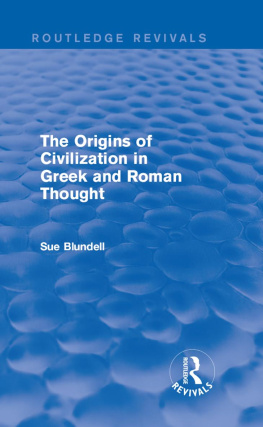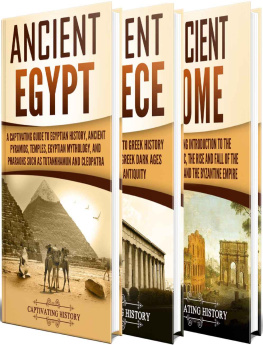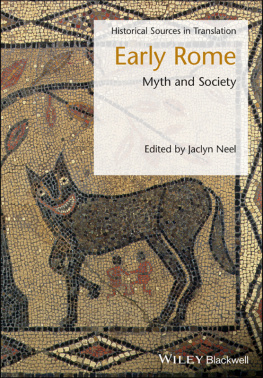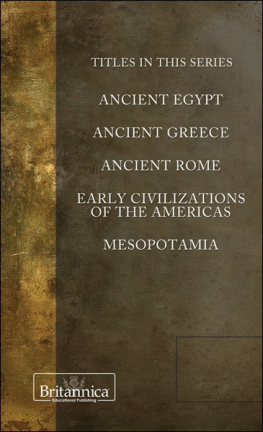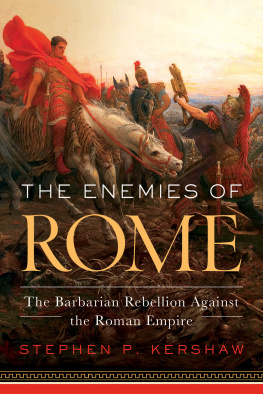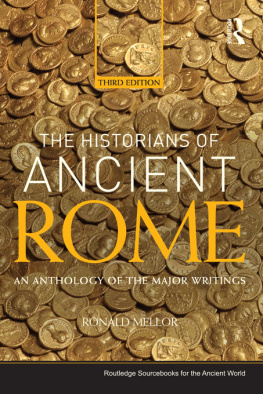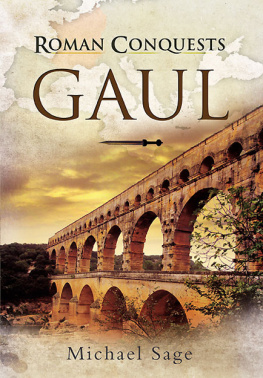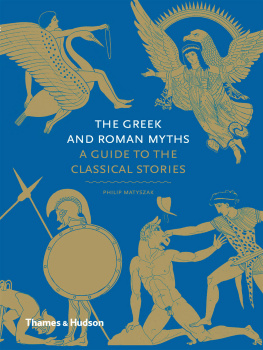ANCIENT LEGENDS OF ROMAN HISTORY
ETTORE PAIS

This 2012 edition published by Barnes & Noble, Inc.
All rights reserved. No part of this publication may be reproduced, stored in a retrieval system, or transmitted, in any form or by any means, electronic, mechanical, photocopying, recording, or otherwise, without prior written permission from the publisher.
Barnes & Noble, Inc.
122 Fifth Avenue
New York, NY 10011
ISBN: 978-1-4114-6518-3
PREFACE
W ITH the exception of a few pages which have already appeared in Italy, this volume was written in America. The majority of the chapters were prepared as lectures for the Lowell Institute of Boston. The others were read before Columbia University, Harvard University, the University of Wisconsin, and the University of Chicago.
The present volume contains special and minute demonstrations of subjects already succinctly treated by me in my Storia di Roma, and represents new studies and new experiences. The judgments of intelligent and honest critics have been considered. Nevertheless I uphold and affirm the fundamental views set forth by me in my previous works. This is not the result of obstinacy. It is the logical conclusion of an objective and untiring examination of facts.
The conclusions attained in my Storia di Roma have been the source of many controversies in my native country. In compensation, however, they have gained for me the sympathy of the scientific public in the other countries of Europe, and also in America. It is natural, then, that I, who have been so cordially welcomed by the American universities, should present to the English-speaking public of this country these and future results of my researches.
The volume has been composed under the shadow of the universities already mentioned. I feel it incumbent upon me, therefore, to extend my sincere thanks to the professors who so kindly aided me. It is impossible to mention all. I trust, however, that it may be granted me to express my gratitude, in a particular manner, to Professors A. L. Lowell and W. T. Sedgwick, of the Lowell Institute; Professors J. C. Egbert and N. G. McCrea, of Columbia University; Professors C. H. Haskins, M. H. Morgan and J. H. Wright, of Harvard University; Mr. M. S. Prichard, of the Museum of Fine Arts, Boston; Professors D. C. Munro, M. S. Slaughter and F. I. Turner, of the University of Wisconsin; President W. R. Harper and Professors F. F. Abbott and J. F. Jameson, of the University of Chicago.
My special thanks are due to Professor Harry Thurston Peck, of Columbia University, who has kindly undertaken to read the English version of my young compatriot, Mario E. Cosenza.
E TTORE P AIS
NEW YORK, February 15, 1905.
LIST OF ILLUSTRATIONS
CHAPTER I
THE CRITICAL METHOD TO BE PURSUED IN THE STUDY OF THE MOST ANCIENT ROMAN HISTORY
T HE greatness of the deeds of the Roman people and the charm of the beautiful land of Italy explain why, from the Renaissance on, the early history of Rome has many times been the subject of thought and investigation. Philosophers and statesmen such as Machiavelli, Montesquieu and G. B. Vico based upon those early tales theories of constitutional law, or laid the foundations of a future philosophy of history. Historians and scholars such as Beaufort and Niebuhr availed themselves of the same material to establish the canons of the new historical criticism.
The period of Roman history extending from the origins of the city to the Punic Wars is a very attractive one to the thinker. There are many causes for this powerful attraction. An inexhaustible quantity of legendary material is fused with the story of internal events and with philosophical maxims. The noblest sentiments of humanity and a respect for law are represented as having guided the actions of the persons and the people to whom was entrusted the task of founding the Roman State. This organism appears so well developed, even from the beginning, that several critics of past generations ventured to assert that Rome had known no infancy.
Enthusiasm for ancient Rome draws ever new and living power from the eloquent and glowing pages of Cicero and Livy. The political wisdom of the Romans has been transmitted in a body of laws which is not destined to perish even in modern times. Upon Roman foresight, too, was modelled in part that complete organization represented by the Roman Catholic Church, which, with the arts of the ancient pagan statesmen, has succeeded and still succeeds in swaying so great a part of human conscience.
Side by side, however, and yet entirely separate from this admiration for Rome, a new influence was gradually appearing. This was the critical method, which endeavored to distinguish the true from the false, and to eliminate, or at least to simplify, contradictory versions. Its object was to determine what should be chosen, and what discarded. It has ended with denying the occurrence of a large proportion of the events examined. In a similar manner, the study of the contradictions in the old Biblical texts and the Gospels has caused the rise of free criticism in the study of the problems of religious history.
The movement in the critical study of Roman history had already attained large proportions at the time of the Renaissance with the Italian Lorenzo Valla. It received a great impetus from Gronovius and Perizonius. Beaufort, the French scholar of the eighteenth century, established the principles of the new criticism with rigorous logic and keen perception. Thus it may be said regarding the study of the earliest Roman history (in its substance if not in its details), that the principles of Beaufort have never been surpassed,not even by the most advanced and conscientious German criticism. It is true that it was left for Niebuhr and the German school to establish the standards of ulterior investigations with greater precision of method and with the aid of investigations in related sciences. The complexity of the subject, however, the various ways in which this portion of Roman history could be investigated, and the variations of critical tendencies in related organisms or in the study of other historical periods, have given a life and a direction to such researches quite different from those intended by Niebuhr.
The opinion of this illustrious German scholar was that legendary and poetical material formed the substratum of all the early tales of Roman deeds. This belief was given a poetic exposition by a great historian,Lord Macaulay. Others, like Schwegler, endeavored instead to discover an historic nucleus, buried beneath a great number of secondary traditions and later interpolations. Theodore Mommsen, finally, with keener eye and greater knowledge of the Roman world, saw that not only the period referring to the origins of Rome, but also subsequent eras, had been subjected to an extensive process of official falsifications.
Upon undertaking to narrate the deeds of the Roman people, Theodore Mommsen did not consider it fitting to expound the primitive period. This was enveloped in a long series of falsifications. He limited himself, therefore, to tracing out that which, in his opinion, formed the permanent and unfailing elements of historical narrative, namely, those elements of a constitutional character which he redintegrated and reconstructed from the more or less questionable data of later ages. In a series of special papers, Mommsen, nevertheless, undertook a minute examination of some of the most ancient legends. He thus demonstrated that elements of a constitutional character, though attributed to the earliest centuries of Rome, were in fact derived from late annalistic compilations of the times of Sulla and of Csar. These later traditions he clearly distinguished from the comparatively trustworthy annals of the second and third centuries B.C.


